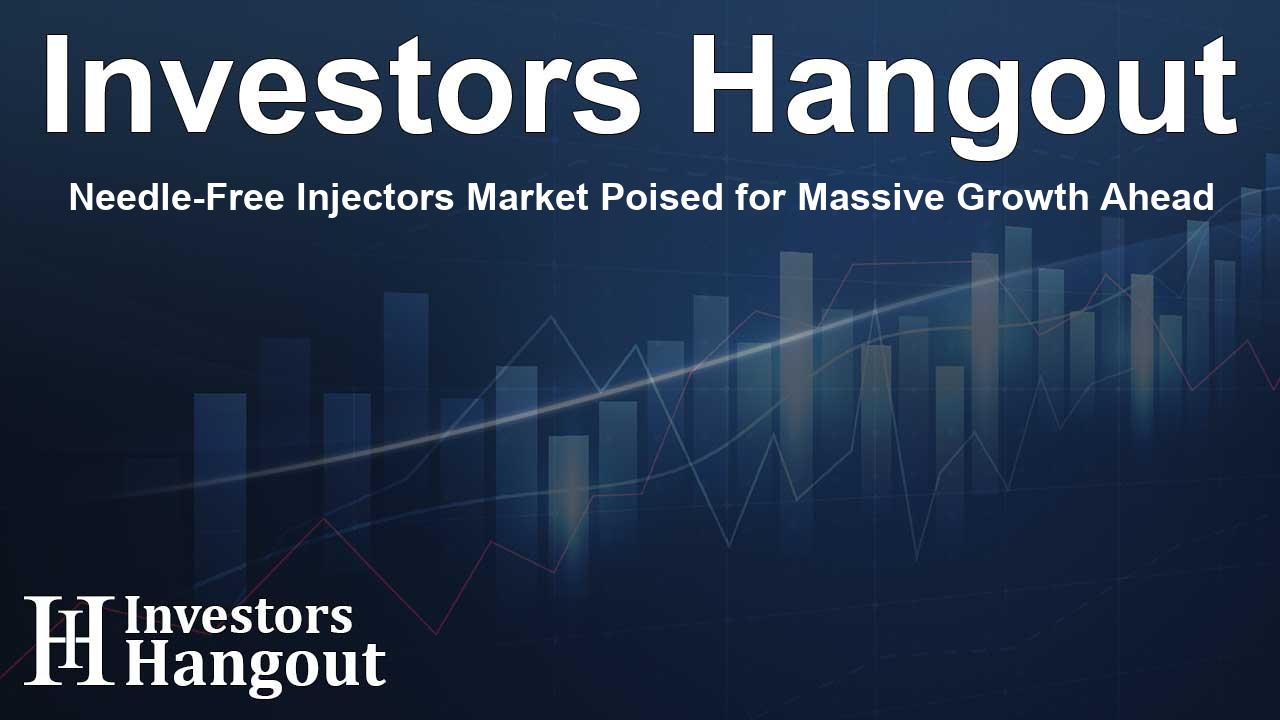Needle-Free Injectors Market Poised for Massive Growth Ahead

Overview of the Needle-Free Injectors Market
The global needle-free injectors market is on a remarkable trajectory, expected to surge from USD 1,478.9 million in 2024 to an impressive USD 2,980.9 million by 2033. This growth represents a compound annual growth rate (CAGR) of 8.1%. The technology behind these innovative injectors allows for medication and vaccine delivery without the discomfort associated with traditional needles, utilizing high-pressure mechanisms to seamlessly penetrate the skin. This advancement minimizes pain and various risks linked with needles, making them a preferred choice in medical settings.
Growth in the US Needle-Free Injectors Market
In the United States, the segment of needle-free injectors is projected to increase from USD 645.6 million in 2024, reaching USD 1,249.0 million by 2033. This shift reflects a CAGR of 7.6%. As the prevalence of chronic diseases, like diabetes and cancer, continues to rise, there is a growing demand for painless drug delivery. Furthermore, the support from regulatory bodies for innovative medical solutions, alongside a transition towards patient-centric home healthcare, is fostering significant interest in these devices.
Key Drivers Behind Market Expansion
Several factors are driving growth in the needle-free injectors market. The increasing emphasis on patient comfort, the need for efficient delivery systems, and technological advancements that enhance usability are pivotal. The shift towards home-based healthcare solutions is also encouraging more widespread adoption of these devices. With a growing focus on reducing needle-related anxiety among patients, companies in the healthcare sector are likely to continue investing in needle-free technology.
Market Insights: Trends and Technologies
The global market analysis reveals that gas-powered injection technology is set to play a leading role, anticipated to comprise a substantial revenue share of 36.0% in 2024. The versatility of gas-powered devices extends to various applications, ranging from transdermal to intramuscular deliveries. Key market leaders are also focusing on expanding their product offering through innovation and strategic partnerships.
Notable Developments in the Industry
The needle-free technology is not limited to human healthcare; it is now being utilized in veterinary medicine and aesthetic procedures, broadening its appeal across multiple sectors. This diversification is increasing the demand for these devices, showcasing their flexibility.
Competitive Landscape and Market Players
In the landscape of needle-free injectors, major players include Gerresheimer AG, Pfizer Inc., and PharmaJet Inc. These companies are actively pursuing mergers and acquisitions to enhance their portfolios and remain competitive. As innovation and collaboration become vital for success, organizations are expected to ramp up their growth strategies to penetrate emerging markets effectively. The market landscape is evolving as companies like Crossject and Ferring Pharmaceuticals contribute to new product developments.
Future Potential and Challenges
While the prospects for growth in the needle-free injectors market appear bright, some challenges exist. Healthcare providers often worry about the effectiveness and reliability of these devices, which may slow adoption. Moreover, the initial investment needed for these advanced systems can be high, posing difficulties in low-budget healthcare environments.
Global Market Segmentation and Regional Insights
The market can be divided based on product type, technology, delivery methods, and user segments. With segments such as fillable and prefilled injectors, there is significant room for growth. Notably, hospitals are expected to maintain a dominant revenue share within the healthcare market segment, reflecting their critical role as end-users.
Geographically, North America is predicted to hold the largest market share, represented by 51.3% in revenue terms by 2024. The rising healthcare expenditure and an increasing number of chronic health conditions are influencing this growth trend. Moreover, rapid advancements in the healthcare sector across the Asia-Pacific region indicate substantial market potential.
Frequently Asked Questions
What is the projected value of the needle-free injectors market by 2033?
The needle-free injectors market is expected to reach USD 2,980.9 million by 2033.
What technology is anticipated to dominate the needle-free injectors market?
Gas-powered technology is expected to dominate the global market, capturing a significant revenue share.
What are the primary applications of needle-free injectors?
Needle-free injectors are primarily used for vaccine delivery, insulin administration, and pain management.
Who are the leading companies in the needle-free injectors market?
Major companies include PharmaJet, Gerresheimer AG, and Pfizer Inc., who are actively improving their product lines.
What are the challenges facing the adoption of needle-free technology?
Concerns regarding safety, effectiveness, and higher costs compared to traditional methods may hinder widespread acceptance.
About Investors Hangout
Investors Hangout is a leading online stock forum for financial discussion and learning, offering a wide range of free tools and resources. It draws in traders of all levels, who exchange market knowledge, investigate trading tactics, and keep an eye on industry developments in real time. Featuring financial articles, stock message boards, quotes, charts, company profiles, and live news updates. Through cooperative learning and a wealth of informational resources, it helps users from novices creating their first portfolios to experts honing their techniques. Join Investors Hangout today: https://investorshangout.com/
Disclaimer: The content of this article is solely for general informational purposes only; it does not represent legal, financial, or investment advice. Investors Hangout does not offer financial advice; the author is not a licensed financial advisor. Consult a qualified advisor before making any financial or investment decisions based on this article. The author's interpretation of publicly available data shapes the opinions presented here; as a result, they should not be taken as advice to purchase, sell, or hold any securities mentioned or any other investments. The author does not guarantee the accuracy, completeness, or timeliness of any material, providing it "as is." Information and market conditions may change; past performance is not indicative of future outcomes. If any of the material offered here is inaccurate, please contact us for corrections.